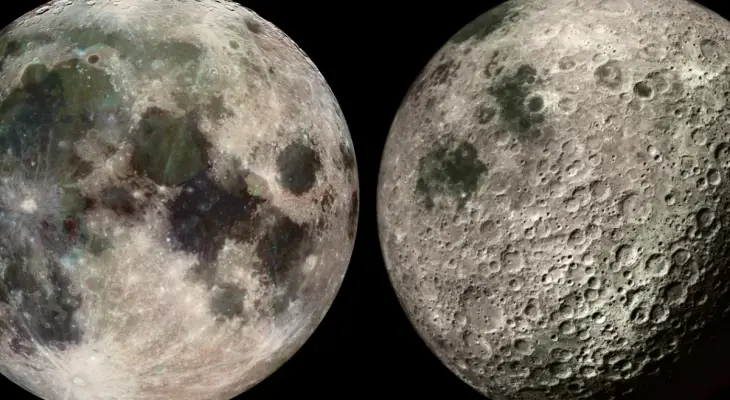Chinese Scientists Explain the Moon's Two-Faced Facts

Holiday Ayo - For centuries, humans have wondered what the far side of the Moon looks like.
Chinese and British scientists recently revealed that the far side of the Moon is much colder than the side facing Earth.
This temperature difference was revealed by analyzing rock samples collected by China's Chang'e-6 mission, the first mission to successfully return material from the far side of the Moon.
The research, published in the scientific journal Nature Geoscience on September 30, 2024, states that rocks from the far side formed at lava temperatures about 100 degrees Celsius lower than rocks from the near side.
"The striking differences between the near and far sides of the Moon in topography, volcanic activity, and crustal structure provide important insights into the formation and evolution of the Moon," wrote a research team led by scientists from University College London (UCL), Peking University, and the China National Nuclear Corporation, as reported by the South China Morning Post, Saturday (October 4).
For decades, scientists have suspected a difference in heat between the two sides of the Moon.
However, due to limited samples from the far side, this hypothesis has never been directly proven, until now.
"The near and far sides of the Moon are very different, both on the surface and likely in the interior," said Li Yang, a professor at UCL and Peking University, in a press release.
"This is one of the Moon's greatest mysteries. We call it the two-faced Moon," he continued.
He added that the dramatic temperature difference between the near and far sides had long been suspected, but this new study provides the first evidence using real samples.
The far side of the Moon is known for having more mountains and craters, and fewer dark plains called basalt, a rock formed by volcanic activity.
Researchers found that heat-producing elements such as uranium, thorium, and potassium, which often occur with other rare elements in a material called KREEP, are much less abundant on the far side.
"Our findings suggest that the lunar mantle on the far side has a lower temperature than on the near side, consistent with differences in crustal thickness and the distribution of heat-producing elements," the researchers wrote.
They also suggested that this difference is likely caused by an imbalance in the distribution of KREEP, which has been detected through satellite observations of the near side.
Interestingly, since the Chang'e-6 samples were returned to Earth in June 2024, scientists have also found evidence that a giant asteroid impact more than 4 billion years ago may have affected the Moon's interior structure, particularly on the far side.
A 300-gram sample collected from the southern rim of Apollo Crater, in the south polar region of the Aitken basin, one of the largest craters on the Moon, also indicates a rock age of approximately 2.8 billion years, corroborating findings from previous missions such as Apollo and Chang'e-5.
Despite this significant revelation, scientists acknowledge that the exact origins of the temperature difference between the two sides of the Moon remain unsolved.
They suggest that the Moon's thermal evolution occurred differently on both sides for most of its history.
This discovery is considered a major leap forward in the study of lunar geology and the evolution of celestial bodies in the solar system.








Leave a comment